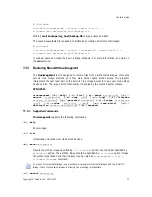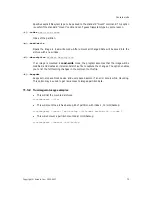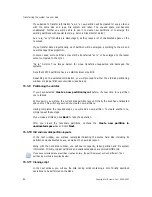
Transferring the system to a new disk
84
Copyright © Acronis, Inc., 2000-2007
If you decide to transfer information "as is," a new partition will be created for every old one
with the same size and type, file system and label. The unused space will become
unallocated. Further you will be able to use it to create new partitions or to enlarge the
existing partitions with special tools (e.g. Acronis Disk Director Suite.)
As a rule, "as is" transfers are discouraged, as they leave a lot of unallocated space on the
new disk.
If you transfer data proportionally, each partition will be enlarged, according to the old and
new disk capacities proportion.
In some cases, some partitions may still be transferred "as is" or be enlarged to the lesser
extent compared to the other.
"As is," Acronis True Image Server for Linux transfers unsupported and damaged file
systems.
Note that FAT16 partitions have a 2 GB maximum size limit.
Depending on the selected combination, you will proceed to either the old disk partitioning
window or disk partition layout window (see below).
13.3.9
13.3.10
Partitioning the old disk
If you have selected
Create a new partition layout
before, it's now time to re-partition
your old disk.
At this point, you will see the current disk partition layout. Initially the disk has unallocated
space only. This will change when you create new partitions.
Having completed the required steps, you will add a new partition. To create another one,
simply repeat these steps.
If you make a mistake, click
Back
to redo the operation.
After you create the necessary partitions, uncheck the
Create new partition in
unallocated space
box and click
Next
.
Old and new disk partition layouts
In the next window, you will see rectangles indicating the source hard disk, including its
partitions and unallocated space, as well as the new disk layout.
Along with the hard disk number, you will see its capacity, label, partition and file system
information. Primary, logical partitions and unallocated space are colored differently.
If you have selected manual partition creation before, the partition layout will look different. That
partitioning method is described below.
13.3.11
Cloning script
In the next window, you will see the disk cloning script containing a list of briefly described
operations to be performed on the disks.




































